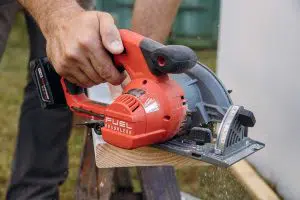
The summer is here, and many of us are ready to dust off the power tools and finally tackle that long-postponed home improvement project.
Hand and power tools are a common part of our everyday lives and are present in nearly every industry. These tools help us to perform tasks that otherwise would be difficult or impossible easily. However, these simple tools can be hazardous and have the potential to cause severe injuries when used and maintained improperly. Special attention toward hand and power tools safety is necessary to reduce or eliminate these hazards.
According to a study conducted by the Consumer Product Safety Commission, handheld power tool injuries send an average of 400,000 people to the emergency room each year. These tools can cause lacerations, puncture wounds, dismemberment, burns, electrical shock, and death. The majority of these injuries are caused by careless use or improper maintenance. With proper training inspection and maintenance schedules, you can reduce the risk of tool-related injuries in the workplace
Virtually all power tool accidents are preventable. More than 8% of industrial accidents result from the improper usage of power tools, whether it’s employing the wrong tool for the job, carelessness, or failing to wear protective gear. The consequences are often tragic.
Remember These Tips the Next Time You Pick Up a Power Tool
Here are some safety tips to consider before beginning your household project:
- Use tools only for the specific tasks they’re designed for, and never operate any power or manual tool unless you’re trained to do so.
- Carefully read the owner’s manual before using the tool.
- Inspect power tools before each use. If parts are worn or damaged, especially cords that become frayed, replace, or repair them. Vibration can loosen the parts of the tools, so screws, nuts, and bolts may need tightening.
- Keep workshops and start space clean and dry to prevent accidents. Sparks ignite scraps, sawdust, and solvents. Water conducts electricity.
- Before plugging or unplugging tools, be sure the power switch is turned off. Never disconnect the power by pulling on the cord. Instead, remove the plug from the outlet.
- If working on a ladder, or scaffolding, carefully set your power tools on a flat surface or in a bin secured to the ladder.
- Always use a ground fault circuit interrupter/roof interrupter [GCFI] when working with power tools.
- Plug in a GFCI for indoor and outdoor use.
- Stop power when loads have a potentially lethal ground current.
Schedule Your Free Consultation Today



